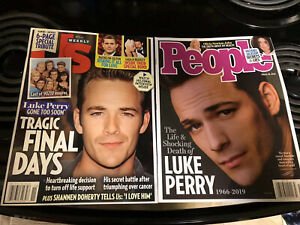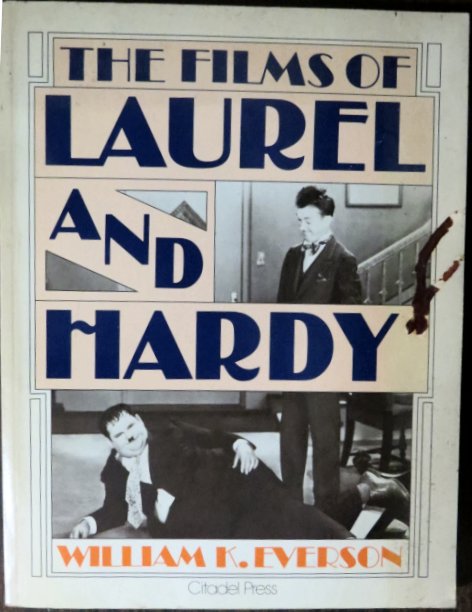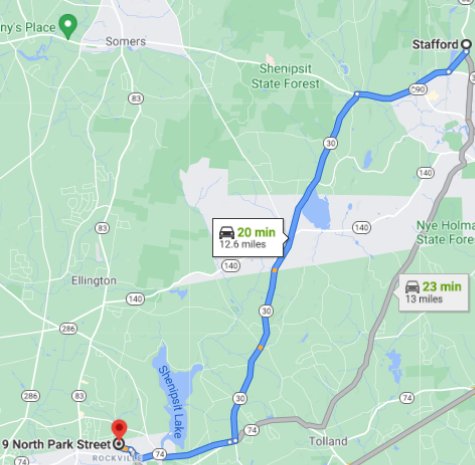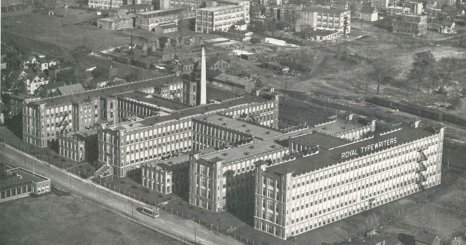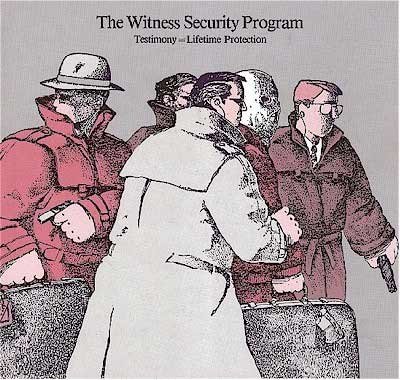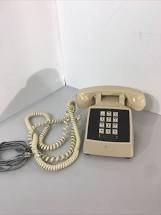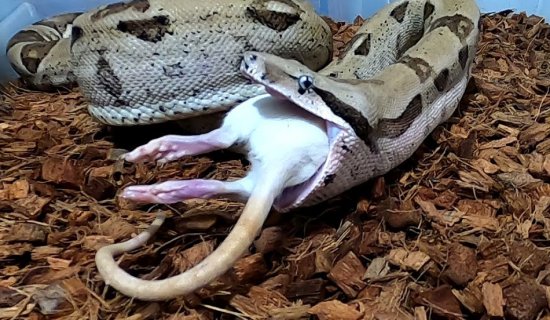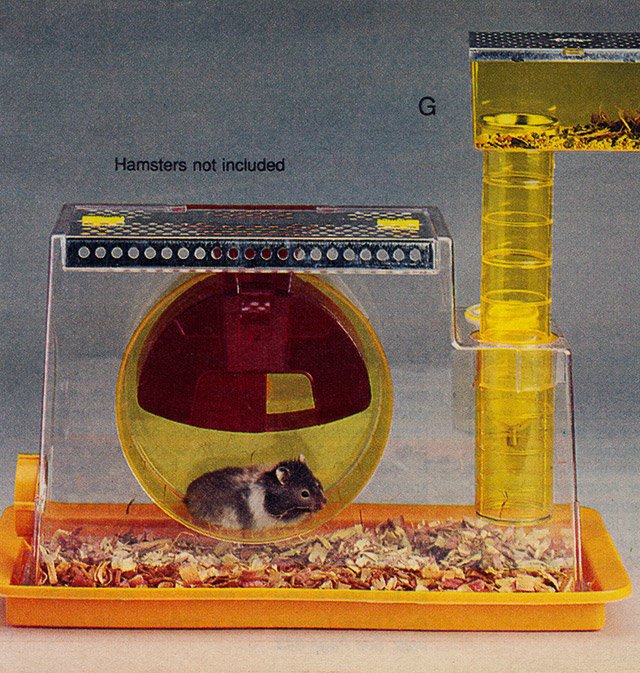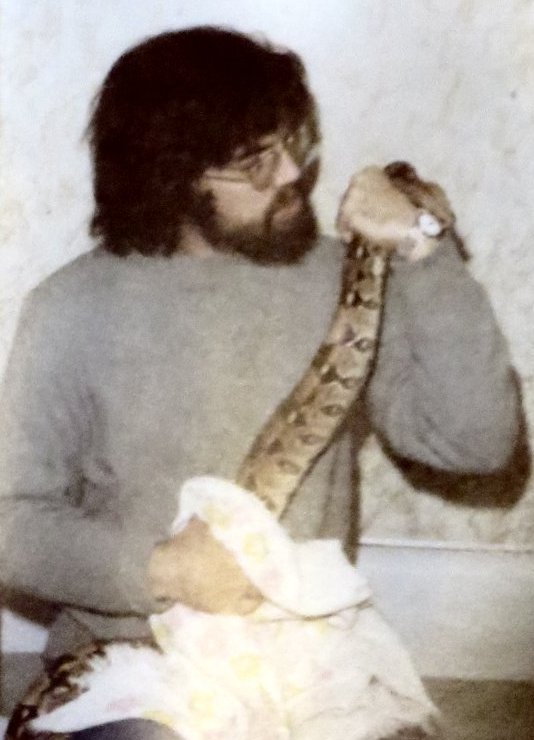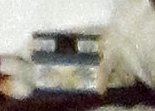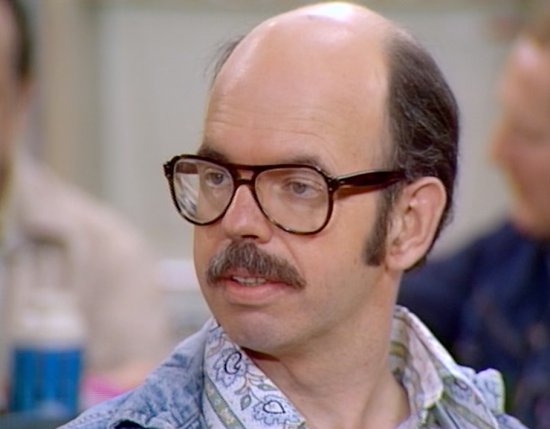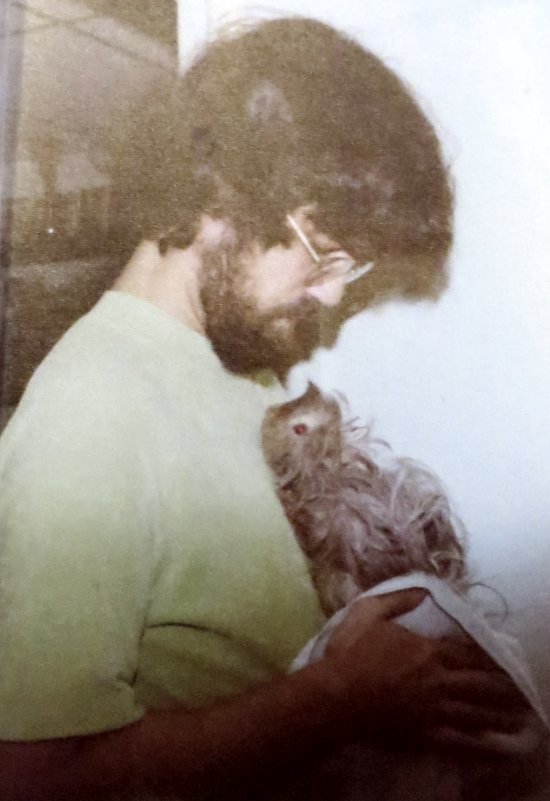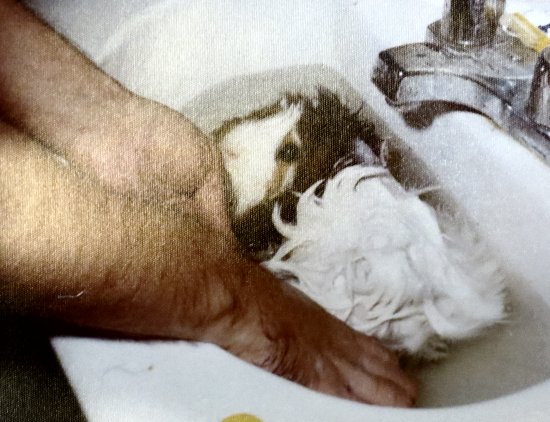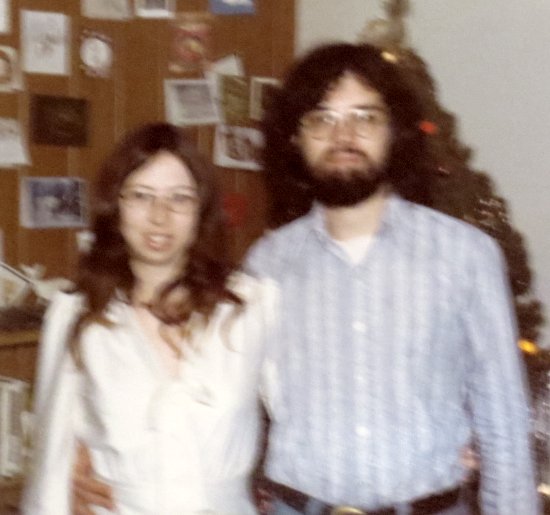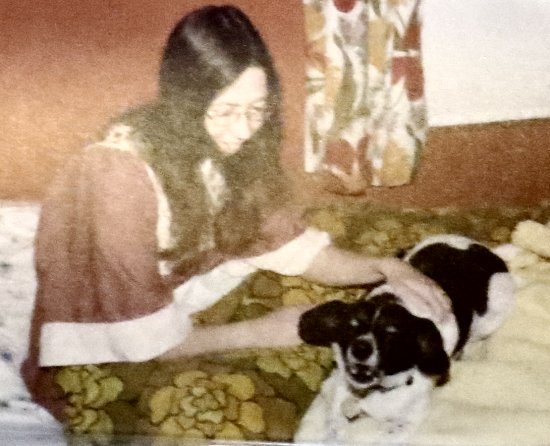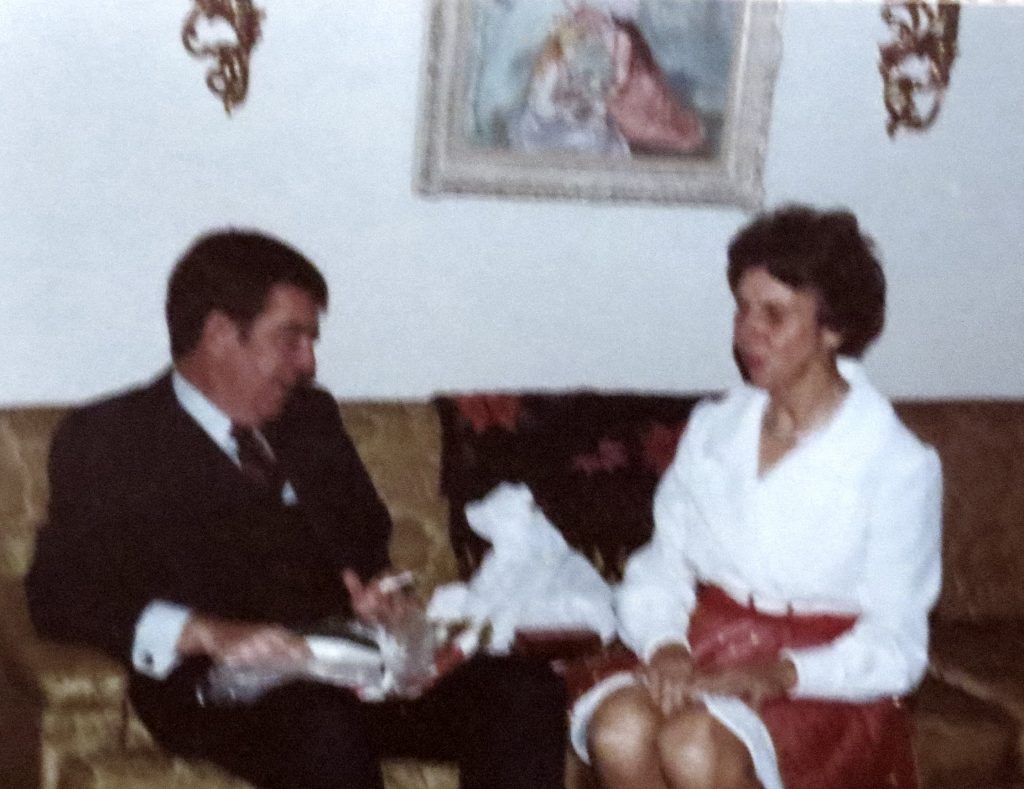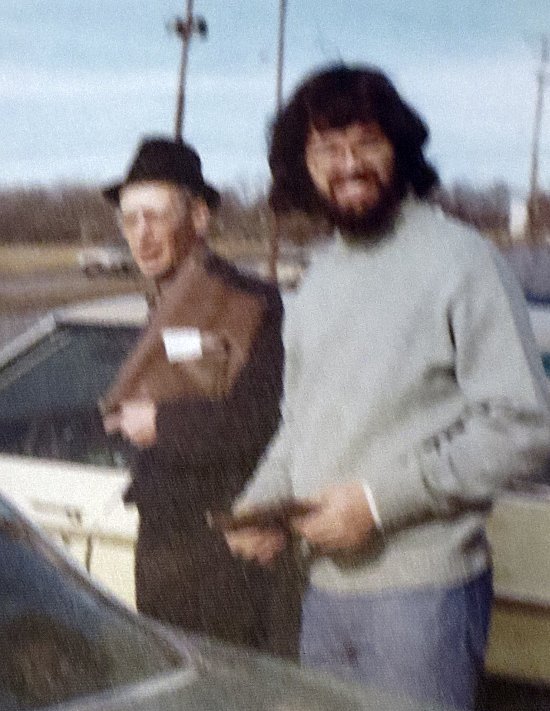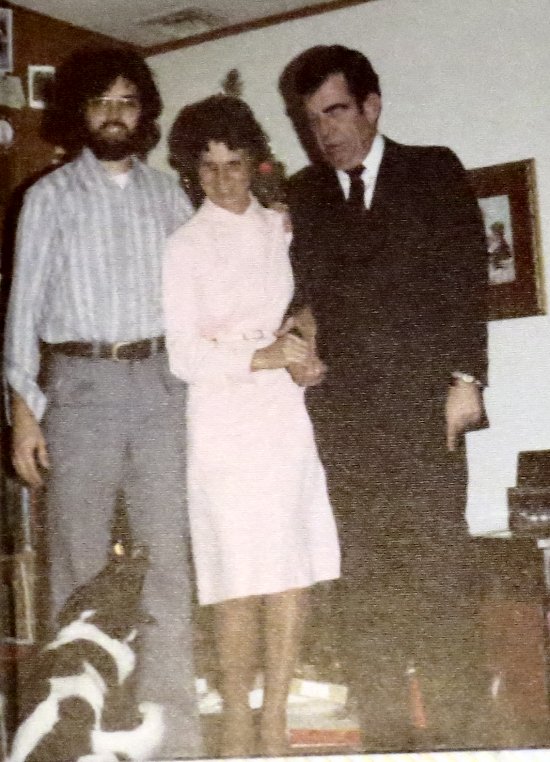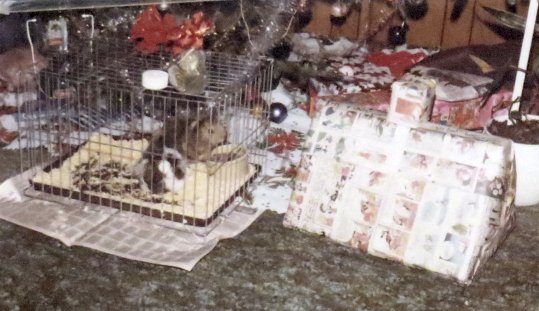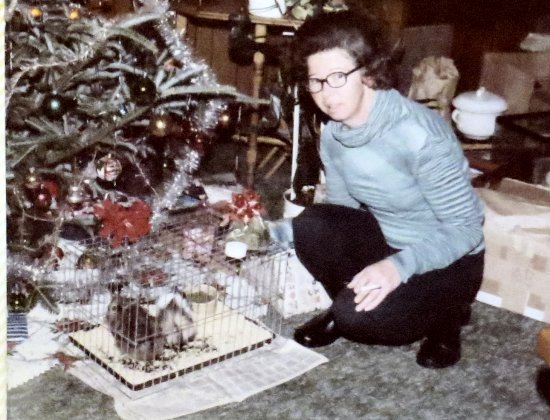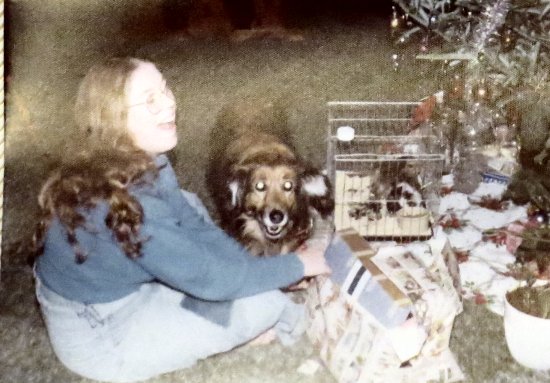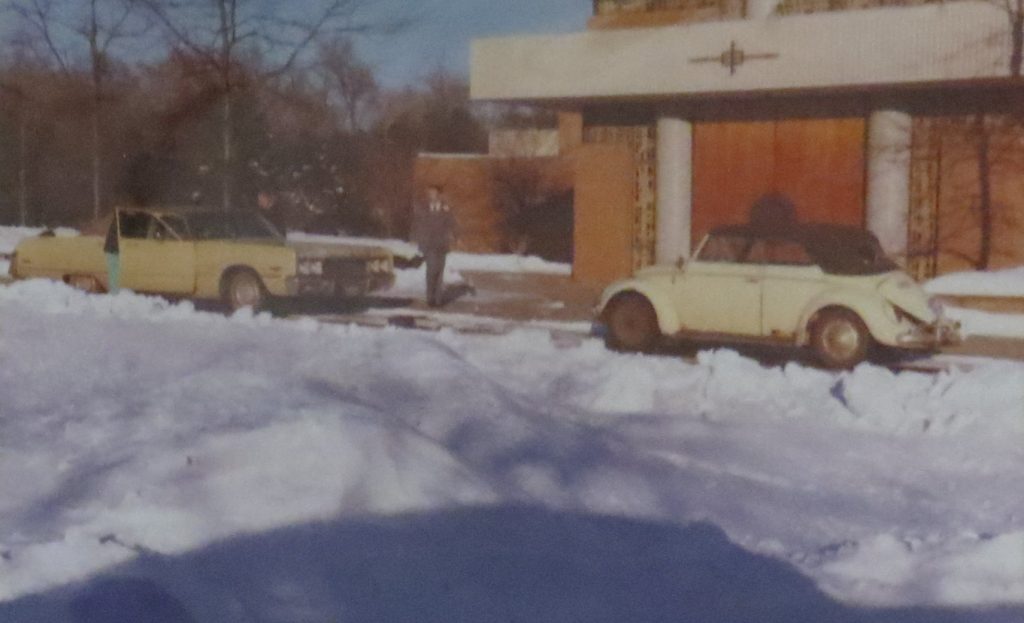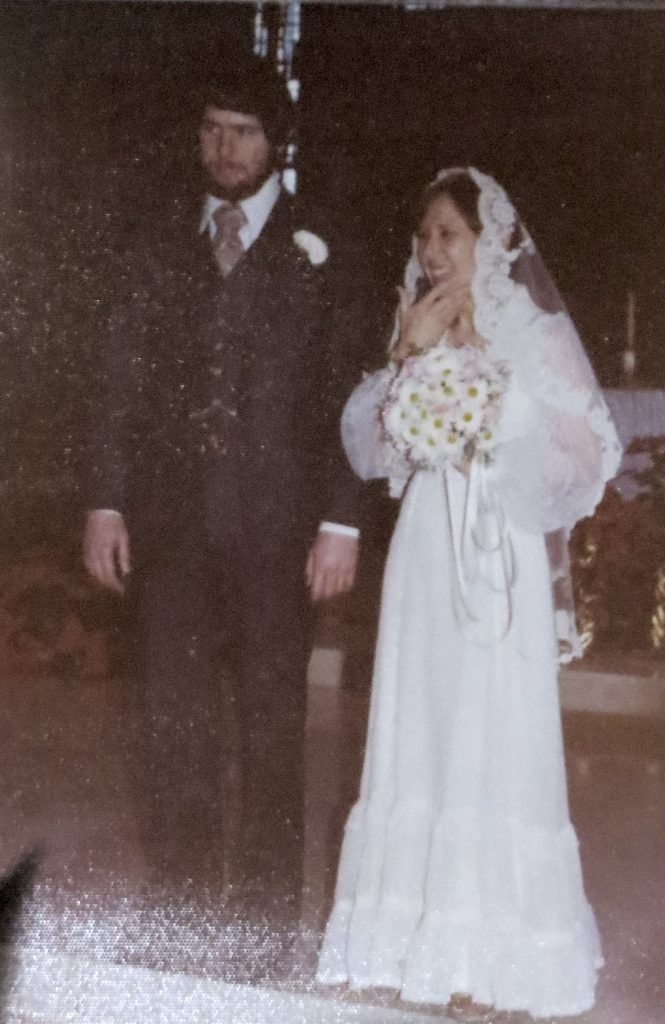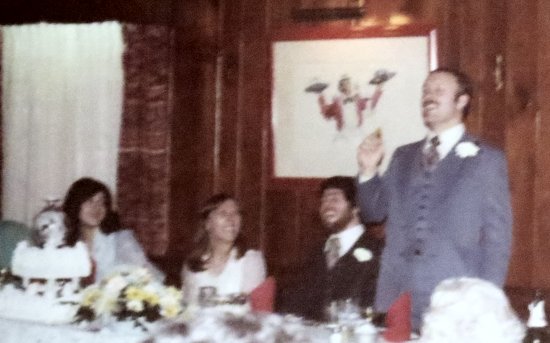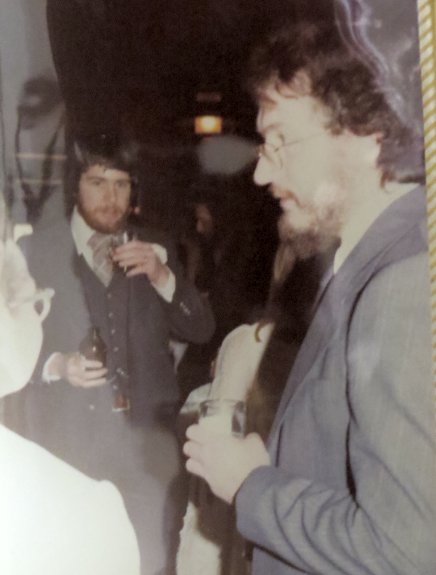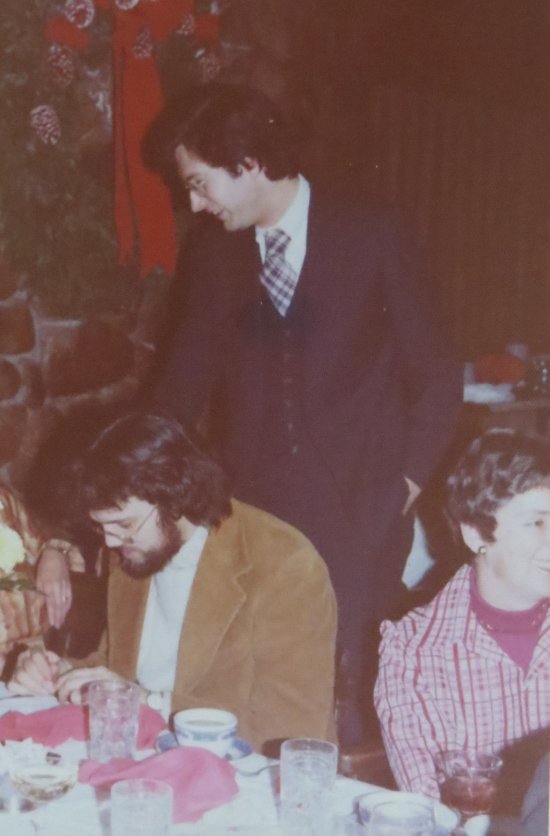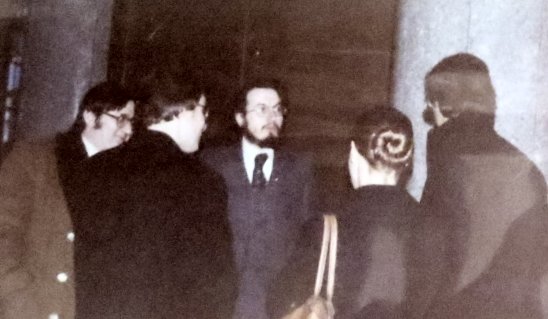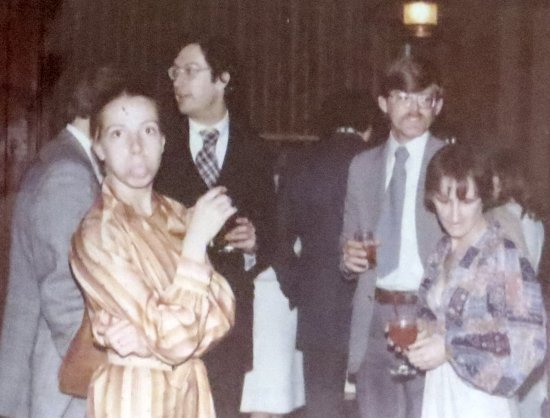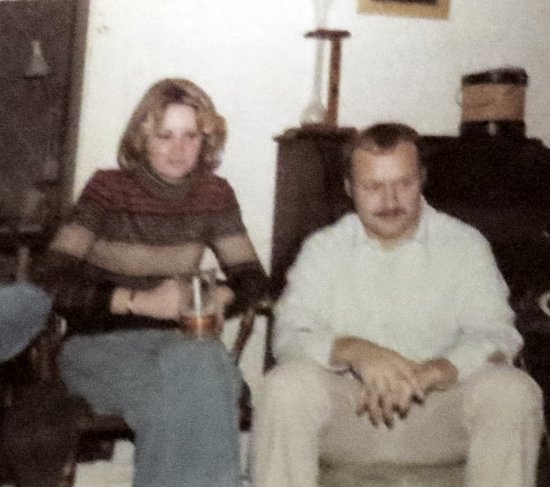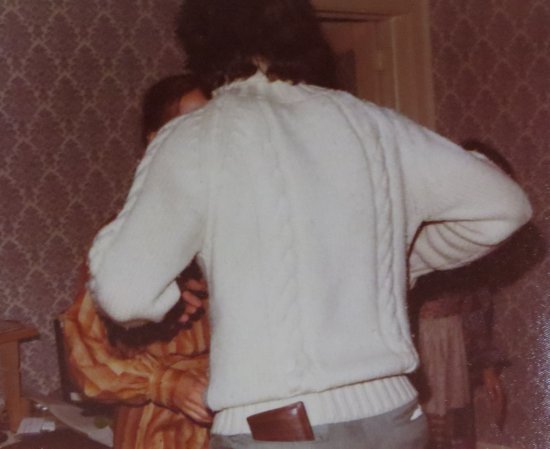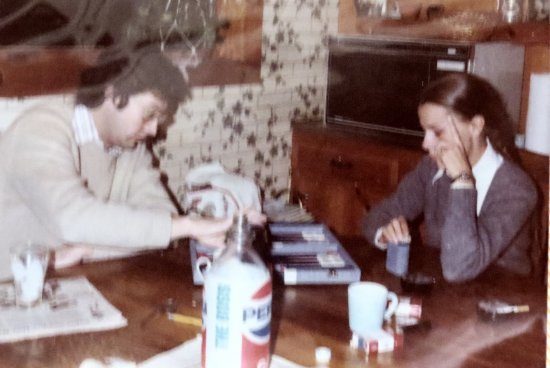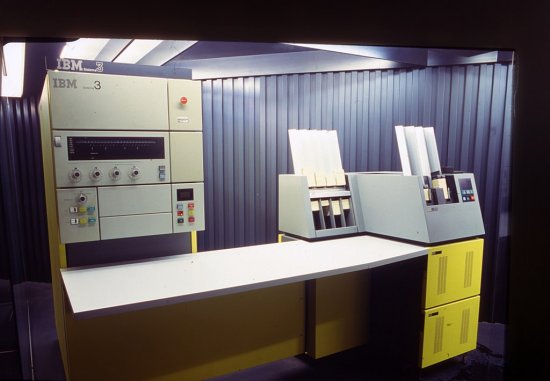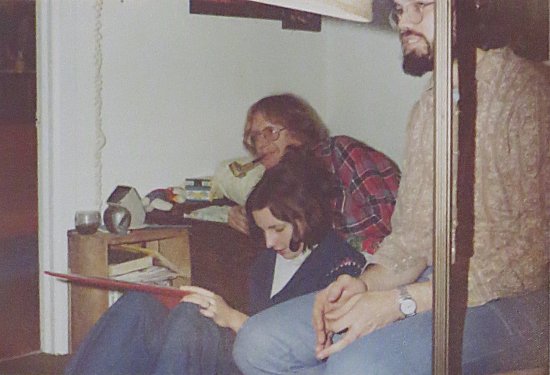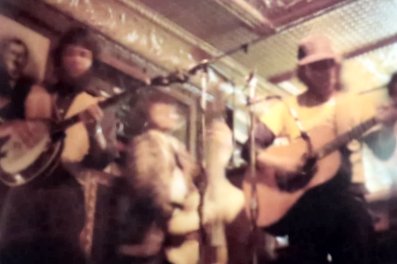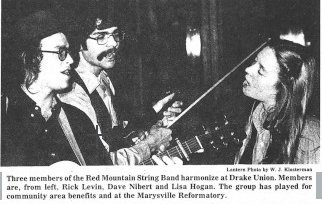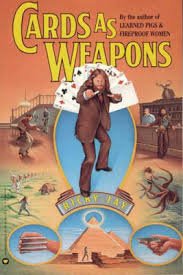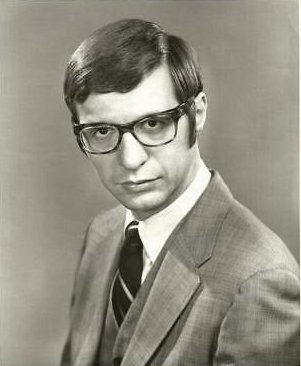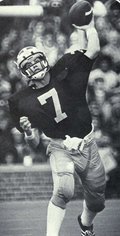Who did what in the early days of TSI. Continue reading
When we moved into the Elks Club’s front house in January of 1981, Sue and I possessed an IBM 5120 computer, a lot of hope, and not much else. Our new dwelling had a spacious place for an office and two extra bedrooms in case we needed to expand. I think that we set the 5120 up in the office with a table and a few chairs. I don’t remember where we obtained the furniture. Sue probably scavenged odd pieces from somewhere. I remember that Sue eventually had a big wooden desk in the spare bedroom.
We also had little in the way of office supplies. Fortunately, Crystal Blueprint & Stationery, a nicely stocked office supply store was in downtown Rockville within easy walking distance. I remember walking there often to pick up a copy of the local newspaper, The Journal Inquirer, from the metallic yellow box, and some index cards or an accordion file from Crystal Blueprint.
That shopping center1 also contained a grocery store called Heartland Food Warehouse and a men’s clothing store, Zahner’s.
Our first employee was Nancy Legge, a debater at Wayne State who came to visit us in Rockville during the summer of 1981, as described here. She stayed with us for a week or so after her traveling companions left. We put her to work stuffing envelopes for a mailing. I don’t remember if we paid her, but I do remember giving her the title of Executive Vice President of Sales Promotion.
Our first full-time employee was Debbie Priola, who had been employed by one of our Datamaster clients, National Safe Northeast. In 1982 (I think) Sue hired her to answer phones and to do bookkeeping and other clerical functions. I do not remember that Sue interviewed anyone else for the position, but she might have.
Debbie drove to Rockville every morning from New Britain. She was a smoker. Throughout most of the eighties so was Sue. So, I learned to live in a smoke-filled environment.
By the time that we hired Debbie we certainly had access to Datamasters. We may have kept manual books for a month or two, but we soon used the Datamaster for Accounts Receivable, Accounts Payable, and General Ledger. Sue was in charge of all of this, and she also did the payroll.
Debbie was really into celebrities. She brought copies of People and Us magazines to work and read them at lunch and during slow periods.
Debbie possessed a trait that I found unbelievable. She was a very good artist. She explained that she saw shades of colors rather than objects. I was (and still am) the exact opposite. I hardly even notice what color things are. I had no problem working in the same office as Debbie, but our radically divergent views on so many things might have made it difficult for me to work closely with her on projects. Fortunately, I don’t remember ever having to do it.
I remember that for Christmas one year Debbie bought me a book about Laurel and Hardy. I guess that she must have heard me praising W.C. Fields and the Marx Brothers and concluded that I liked all old-time comedians. I don’t.
After she had worked for us for a while she got a new boyfriend, who, I think, was trying to start a business of some sort. At some point—I think that it must have been 1985—he prevailed on Debbie to loan him some money. She did, but part of what she gave him was TSI’s money. Sue discovered the discrepancy when she closed the books at the end of the month. She confronted Debbie in private. Debbie promised to pay it back, and she did. At that point Sue fired her.
I had never fired anyone, and up until then neither had Sue. In my opinion she did a very good job of handling this difficult situation.
We finally had enough business in 1984 to justify hiring a programmer. This time I placed ads in the two local newspapers, the Hartford Courant and the Journal Inquirer, which covers the eastern suburbs of Hartford. I don’t have the text of the ad, but I am sure that we described it as a starting position and requested applicants with some programming experience. It also mentioned that familiarity with BASIC or the Datamaster would be a plus, but we did not expect anyone with such a background to respond. We interviewed two people in our office. Both were women in their twenties.
If it had been left up to me, I would have hired the other lady (whose name I long since forgotten), but Sue was very impressed with Denise Bessette, who was married and lived in Stafford. Denise either called us after the interview or wrote us a letter that indicated that she really wanted to work for TSI. So, we asked her to come in again, and I agreed that we should hire her.
At the time Denise was working for Royal, the typewriter company. At the time Royal was trying to break into the personal computer market. She wrote small programs to demonstrate to prospects the potential of the system. The programming language that she described to me was incredibly primitive, probably to compensate for the memory and storage limitations of the hardware. In those days it was difficult to get a PC to do anything more complicated than a simple game.
I assured Denise that the programming environment that TSI used was much more powerful and was also much easier to use. I don’t think that we even talked with anyone that she worked with at Royal. She may have just been a contractor there. I am certain that I talked with no one. Sue might have.
Denise also smoked. In the eighties the pernicious addiction seemed to be more prevalent among young women than young men. Almost everyone whom I knew who smoked and was my age or younger was female. I don’t know why.
For a while TSI had four employees, and the other three all smoked. During this period I experienced headaches pretty often. I carried Excedrin with me wherever I went.
Before we hired Denise we had bought a Datamaster with a letter-quality printer. When she was in the office, I let her use the computer. I worked on it before she arrived—I was usually in the office by 6AM—and after she left. When Denise was in the office, and I was not training her or explaining a new project, I wrote out new programs by hand or edited program listings. If the weather was good, I went outside in the courtyard behind the house to work in the sun on a card table.
At night I printed listings of programs. I had written a Datamaster routine that accepted a list of program names and created a text file with a list of commands that could be executed to print the listings for the designated programs one after another. Occasionally the paper would jam. When I awoke I fixed the jam and then had it resume printing. I could work on the computer while the printer was active.
Our listings, by the way, were on continuous 8½x11″ paper. We filed them by program number in accordion files for the client. When I visited the client I brought the accordion files in a sample case.
I spent most of the first few months of Denise’s employment helping her learn BASIC and the tools available on the Datamaster. Within six months she was up to speed, which I defined as meaning that her efforts were saving me more time than I spent explaining, checking her work, or redoing what she had done. Six months may seem like a long time to reach the break-even point, but most programmers whom we hired never ended up saving me time.
Denise primarily worked on TSI’s software for ad agencies. It was difficult enough to teach someone the agency business. There was no need to get her too involved in the vast array of other businesses that are described here.
Denise had a very young child, Christopher (NOT Chris), when we hired her. When he got a little older she brought him to work occasionally.
After she had worked for us for a few years, Denise asked us if she could shift to part-time. She wanted to finish her college education and get a masters degree. She told us that she had applied to prestigious Smith College in Northampton, MA, and had been accepted to study math and economics.
At this point Denise was a very valuable member of the TSI team. She understood how I approached projects, she appreciated the need for consistent programming structures, and she had learned enough about advertising to make many decisions on her own. I informed her that TSI would take as many hours as she was able to give us. However, I knew that it was likely that I would need to hire another programmer, which meant, in the best case, six months of reduced productivity from our #1 programmer, me.
Denise and I worked together for thirty years. Giving in to Sue on the decision about who should be our first programming hire was probably the best choice that I ever made. My life would have been unimaginably different if we had hired the other candidate.
Our third full-time employee was Kate Behart, who lived somewhere west of the river near Hartford. We wanted to hire someone to help with marketing and administrative tasks that neither Sue nor I wanted to control. I don’t remember interviewing her. Sue must have done it.
We later learned that Kate had changed her name. It was originally Sally Stern. She didn’t get married, and she was not in the witness-protection program. Rather, because she did not get along with her father, she did not want to be associated with him.
Kate was into some New Age stuff. We later discovered that she also used the first name Saige in some of her activities in those areas.
Kate was picky about what kind of chair she used. We let her pick one out, but she brought in a pillow to sit on when she used it.
I never saw any of Kate’s cats, but she was definitely a cat person. She told all of us that she liked to pick them up and smell their fur. I can understand that impulse better now, but at the time I had never owned a cat. I am not sure that I had even petted one.
The most peculiar thing about Kate was her interest in Connecticut Lotto, which the state instituted in 1983. She had bought a book that contained strategies for playing the numbers. She allowed me to read it. I told her that it was utter hogwash. Although she was a pretty smart person, she seemed to believe the book’s claim that “hot” and “due” numbers existed. These games are incredibly bad investments. If they weren’t, states would not rely on them for revenue.
I upset Kate quite a bit once. We drove to Boston together to make a presentation to a potential client. I used the phrase “guys and girls”. She was greatly offended. She considered the term “girls” demeaning. Maybe so, but once the word “guys” left my mouth, I could think of no better way to compete the thought. No one says “gals” any more.
Kate once sent a letter to an ad agency in New Jersey on TSI stationery. She did not ask me to approve it, and, in fact, I had no idea that she ever wrote letters to prospects on company letterhead. This one made some claims about a software company based in Dallas that specialized in ad agencies. Some of the statements were not true. Kate evidently misunderstood something technical that I had said in the office.
The president of the offended company sent me a letter complaining about Kate’s letter. It threatened legal action. I was shocked to learn what she had done. I told Kate that I needed to approve all correspondence and told her that the company was threatening to sue us, which they were. Kate was suitably contrite. I sent out a letter of apology to both the prospect and the software company. We heard no more about it.
Kate worked with us for several years. I don’t remember why she left, but I think that we parted on amicable terms.
My strong impression of the first few years of TSI was that Sue spent them on the phone, and I spent them on the computer. By the time that we hired Denise we had ordered a second phone line and installed Contel telephones. I think that we still had only two receivers, one in the office and the other in the spare bedroom, which had become Sue’s office. There was a rollover feature from one line to another, as well as a way to put clients on hold. My recollection is that we used this system until we moved in 1988.
We were never able to communicate directly with our Datamaster clients’ computers. If a problem needed to be fixed immediately, we had two choices: drive to the client’s or talk someone through keying in program changes over the phone. Sue drove to F.H. Chase pretty often, and I was on the road in the Hartford area several days a week. One car—the Duster—was no longer enough.
In 1982 we both went shopping for cars. We decided to purchase Toyota Celicas. At the time there was a self-imposed quota by Japanese auto manufacturers. There was only one person at the first Toyota dealership that we visited. He was sitting at a desk reading a newspaper. He did not budge when we entered. We had to walk to his desk to get his attention. He told us that they had no cars. He wasn’t even interested in talking with us.
Eventually the market loosened up a bit, and we were both able to purchase new cars. The idea of bargaining for a better price was never even a consideration. Both cars had standard transmissions. Sue’s had air conditioning. I would never have paid extra for such a frivolous feature in an Arctic state like Connecticut. I don’t remember precisely what either car looked like, but I remember that I loved to drive mine.

Sue established a relationship with a gentleman at Desco Data Systems, the company in East Windsor that provided the computer used by Sue’s sister Karen at their father’s company. I don’t remember his name, but he specialized in custom forms. He did a good job in providing us with web-mounted letterhead and multi-part invoices. We recommended him to all of our clients, and most of them used him for their custom computer forms. I never heard a bad word about him, and our customers were not shy about complaining about problems.
Our IBM customer engineer was Jim Michaud, who lived in Rockville. I remember that he came to our office on several occasions, but I cannot remember why. I cannot remember any serious problems that we ever encountered with any of our Datamasters. Maybe there was something that he needed to do when we initially took delivery on systems for our clients.
I also remember that Jim had two cars with vanity license plates: ICANOE and IKAYAK. They both had roof racks.
1. Crystal Blueprint stayed open in that location until 2018. Heartland and Zahner’s (which still operates stores in neighboring towns) moved out much earlier. I remember walking into Heartland one day and being shocked by its half-empty shelves. It closed shortly thereafter.
2. I think that Jim Michaud is still active in the sport of white-water canoeing. He has a Facebook page devoted to his photos. An interview with him in 2015 is posted here.




